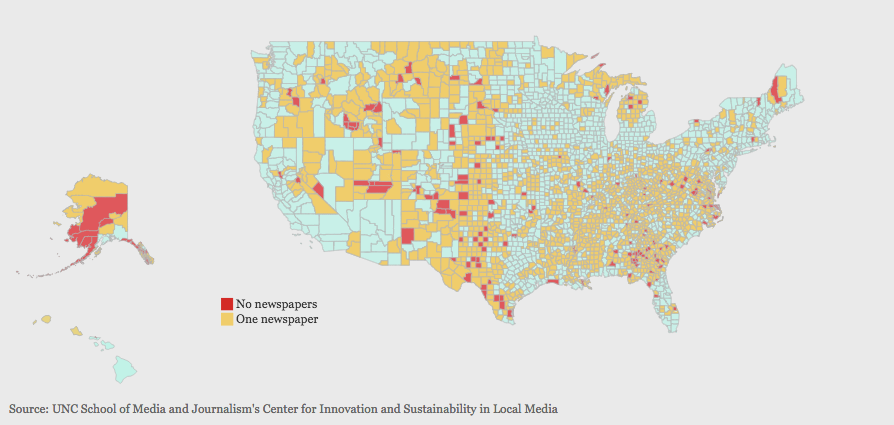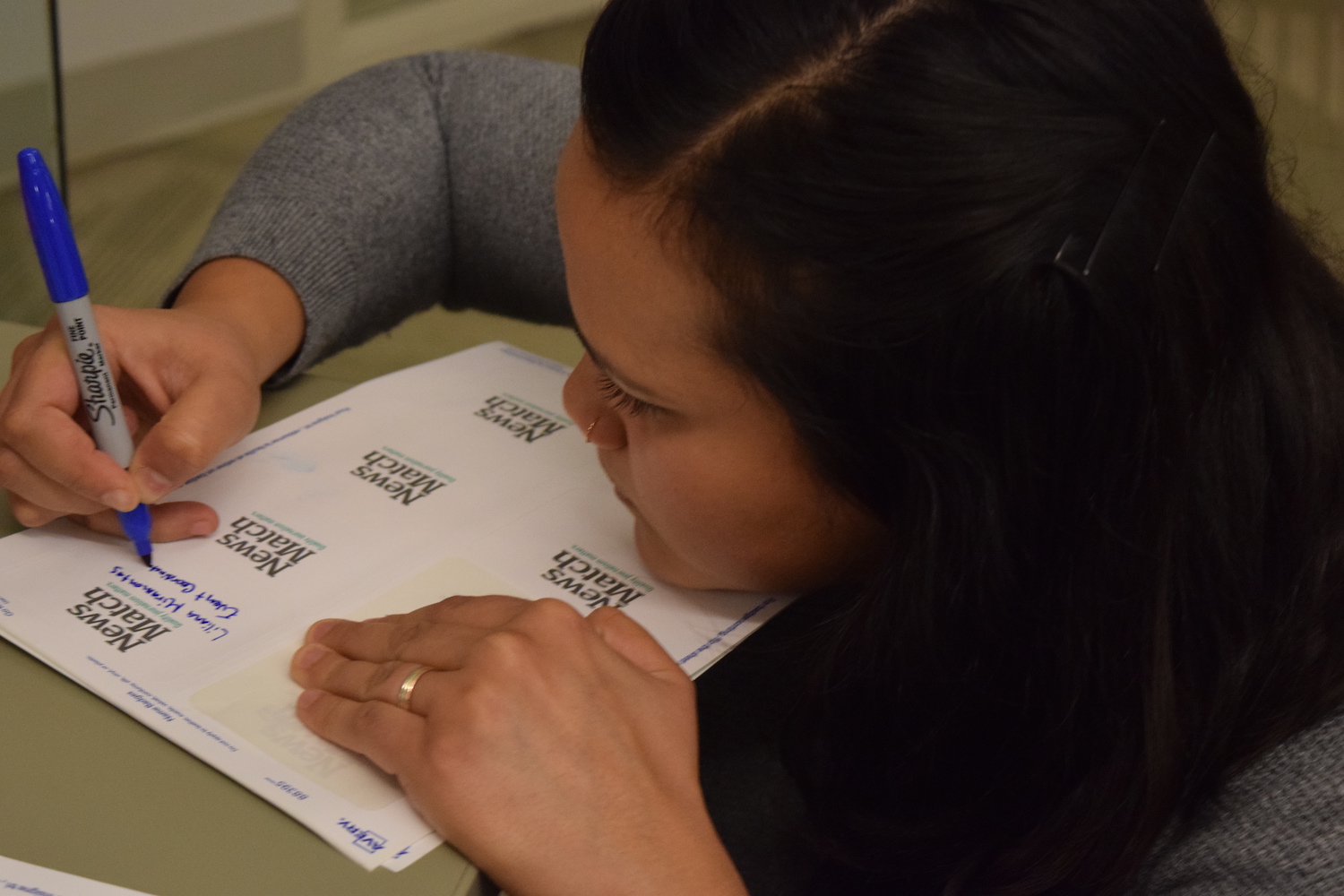
Eight ways to make international news local
To promote journalistic excellence and build informed communities, Knight Foundation sponsored the Council on Foreign Relations’ Local Journalists Workshop, held Jan. 17 and 18 in New York City. Below, journalist Chana Schoenberger shares some key lessons.
How can local journalists make the connection between the issues they report on and international events? That was the theme of the Council on Foreign Relations’ (CFR) Local Journalists Workshop, supported by Knight Foundation, held last month at the independent, nonpartisan organization’s New York City headquarters.
Bringing together 93 local news journalists from across the United States, the workshop featured reporters, editors, foreign policy experts, economists, and academics discussing the best ways to inform audiences about how local events fit into a broader national and international context so that they are better equipped as citizens to make educated choices.
One theme running through the half-dozen expert panels was the importance of explaining why readers or viewers should care about a global trend. “You have to find the connection between international affairs and people’s lives and build out from that,” said CNN GPS host and Washington Post columnist Fareed Zakaria.
Here are eight takeaways from the workshop:
Look for the human angle
The war in Syria didn’t come home to many Americans until they saw the indelible image of a Syrian toddler’s body washing up on the beach after he drowned in a failed escape, Zakaria noted. “You do need to find a way to make it feel like it has an impact for people,” he said.
Local reporters can make international stories hit home by finding elements that their audience can connect with on a human level. For instance, rather than talking about “globalization,” look for Made in China labels on goods sold locally, said Carla Anne Robbins, a former New York Times reporter who is an adjunct senior fellow at CFR.
Help your audience feel in the know
“You have to approach it less with the view that this is spinach or broccoli the audience has to consume,” Zakaria said. Instead, think of international angles as affecting people’s everyday lives. For instance, on the question of the ongoing trade war with China, a local reporter may want to look at regional companies with operations in China, or Chinese companies with nearby operations, and how they intersect with the area’s economy, he said. Similarly, on immigration, a local newspaper might want to consider the influx of migrants from Guatemala and Central American countries and look at why they are coming to the U.S. and to the paper’s region specifically.
It’s a matter of making people feel smarter so that when they go out for beers, they have something to share about global issues, he said.
Use international examples (carefully)
Americans may look for international case studies when considering how to address pressing issues (think gun policy, for example) or how a proposed policy might work in practice.
In Germany, for instance, companies like the industrial manufacturer Siemens work with high schools, technical programs and universities to ensure workers have the training they need to get jobs, said Diana Farrell, CEO of the JP Morgan Chase Institute. That’s a workforce development model that could replace or supplement the current system here, where many jobs require experience that new workers can’t get.
That said, you don’t want to alienate readers by intimating that the U.S. should pattern itself after other countries, because you may run up against American exceptionalism.
“One of the first things I learned in Washington is you can’t ever use Sweden as a model,” said economist Heidi Crebo-Rediker, an adjunct senior fellow at CFR and the CEO of International Capital Strategies.
Keep track of big stories
Among the major global stories that could play out over the next six months, experts pointed to Brexit, arms control, the beginnings of the 2020 presidential campaign, USMCA (the revised NAFTA agreement), workforce competitiveness, climate change and terrorism.
CFR’s website is one place to look for backgrounders on a range of issues and contact information for academic subject-matter experts, said Lisa Shields, who runs global communications for the group.
Highlight what’s the same, and different, this time around
Local reporters can investigate the ways in which the global economy is changing and what this means for their readers.
“When people say, ‘We’ve been here before, look at the migration from agriculture to industry and we did fine,’ they forget the traumatic experiences,” said Farrell.
Instead, it’s important to elevate what makes a reoccurring issue modern and emphasize the nuanced impacts. Here’s an example of a new way of reporting on this issue from economist Chike Aguh, a principal at the McChrystal Group:
The experience of dislocation will likely repeat itself as technology alters the economic and labor makeup of the U.S., said Aguh. For instance, autonomous vehicles will be a “huge boon in aggregate for the economy,” but driving is the most popular job for American men, with almost as many drivers as there are teachers in the U.S., he said.
“Robots are coming for our jobs, but not for everyone’s job equally,” Aguh said. African-Americans and Hispanics, as well as immigrants, are the most likely to see disruption, as they are disproportionately represented in low-skill jobs, he said.
Fight disinformation
It’s critical for reporters to verify sources, always, but the job gets trickier when dealing with international entities. Some tips:
- It’s important to look at the history of a Facebook page, to make sure the administrators aren’t taking advantage of a breaking-news story to push inflammatory content or to make money from advertising, says Claire Wardle, executive director of First Draft.
- Journalists should also use the Internet Archive to see if an internet posting has had its date or location changed, and there are tools to verify an image, what Wardle refers to as “source checking.” First Draft offers a free one-hour online course on these skills for journalists.
- Another tactic that works, Wardle said, is linking newsrooms across a country or region through closed Slack channels so that journalists can share information on rumors and collaborate on debunking them. This is particularly important, she said, when rumors spread within closed groups on messaging apps like WhatsApp and Facebook Messenger, which are popular overseas and also in diaspora communities in the United States.
- Reporters should take care not to share information from government-controlled sources like Russia Today without noting their affiliation, Robbins said. It’s important to explain to readers why what they’re seeing is not accurate, she said: “I don’t think this should be segregated into a fact-checking part of the newspaper; it should be in every story.”
Look at contrarian angles
A nuanced look at international-relations issues often reveals both positive and negative impacts on a local community. Consider the car companies that the Obama administration bailed out during the global financial crisis, Zakaria said. Permitted to break union rules, they paid some workers much less than what the unions had negotiated in return for keeping factories open in places like Michigan, rather than move jobs offshore to cheaper locales. But much of the dislocation employees faced was due to technology, with a substantial drop in the number of workers in each plant and a movement toward higher-skilled jobs rather than low-skill labor. “Blue-collar jobs are getting squeezed,” he said.
International trade has a similarly complicated effect on consumers, he said, noting that the prices of toys, food and nearly everything else that Americans buy has dropped by 30 to 40 percent over the last three decades. That’s the equivalent of a tax cut, but most consumers don’t realize that their spending has gone down precipitously. “People don’t walk into Walmart and say, ‘Thank you, China, thank you, globalization,’” Zakaria said.
With much attention on President Trump’s proposed border wall, other immigration issues are going unreported, said Alexandra Fuenmayor Starr, a fellow at the Columbia School of Journalism. For example, Starr said, few are writing about the administration’s cutbacks in skilled immigration, or about the visa-holding, legal-immigrant children of Central America who came here a dozen years ago.
Know where to go for facts and expert opinions
“When I look for data on what’s happening in the macro picture globally and in the U.S., my first port of call is the International Monetary Fund,” said Crebo-Rediker.
Other experts suggested the Migration Policy Institute, the Council of Economic Advisors, the Bureau of Labor Statistics, McKinsey Global Institute, the Congressional Budget Office and the European Union’s Disinformation Review as sources.
Chana Schoenberger is a freelance business journalist and author.
Photo (top): Arthur Edelman on Unsplash
-
Journalism / Article
-
Journalism / Article
-
Journalism / Article
Recent Content
-
Journalismarticle ·
-
Journalismarticle ·
-
Journalismarticle ·





